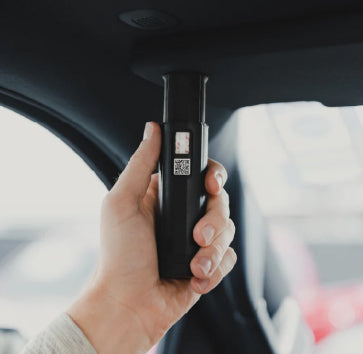There is a new threat emerging through recent studies that recognize the presence of thirdhand smoke (THS) residue remaining in vehicles and on surfaces. The danger of severe health risks associated with thirdhand smoke is as great, if not greater, than from secondhand smoke.
Exposure to secondhand smoke causes over forty-six thousand deaths related to heart disease and three thousand deaths from lung cancer among adult non-smokers every year in the US, alone. Although laws banning smoking in public areas are on the rise, vehicles continue to be a source of thirdhand smoke exposure to non-smokers. It is almost impossible to eliminate smoke residue from a used car; nicotine remains airborne, and fine particle pollution lingers long after ownership by a smoker.
On a more positive note, more people are now enforcing private non-smoking rules for their cars. Historically, the percentage jumped to 79.5% by the end of 2014. However, one in ten non-smoking adults continue to be exposed to vehicular thirdhand smoke, and any level of residue within indoor spaces and vehicles is harmful.
Defining Thirdhand Smoke
Thirdhand smoke is the build-up of tobacco smoke on surfaces, particularly in vehicles. This residue gradually increases in toxicity and can be found in inaccessible areas like air vents and on indoor surfaces of all types. This by-product of smoking, whether cigarettes, cigars, or e-cigarettes, remains a potential health hazard to non-smoking passengers of all ages. Thirdhand smoke residual particles and gases are found within cars, furniture, walls, and household items, staying active for a long time after smoking has stopped.
Associated Health Risks
Some of the biggest potential health threats from thirdhand smoke in vehicles and surfaces are cardiovascular complications like heart disease and respiratory exacerbations, including lung cancer, asthma, infections, and infant SIDS. The list goes on to include generic and chronic ailments and allergies.
Thirdhand Smoke and Children’s Health
The most alarming factor is how thirdhand smoke can affect the health of children. Research has shown that changes are evident in the internal organs of mice exposed to thirdhand smoke. Their bodies also excrete a tobacco-related biomarker similar to that found in children exposed to secondhand smoke and thirdhand smoke residue.
Another study indicates that children living with parents who smoke within the household, therefore creating second and thirdhand smoke, are absent due to illness from school forty percent more days than children of non-smoking parents. Long-term effects of a child’s exposure to thirdhand smoke may not manifest until later in life.

Environmental Tobacco Smoke and Cardiovascular Disease
Environmental tobacco smoke, or ETS, describes second and thirdhand smoke exposure. New studies are proving a link between ETS and cardiovascular disease and atherosclerosis.
In studies conducted on mice, exposure to THS and ETS damaged DNA and impacted cytokines, the small proteins that regulate inflammation. In addition, this contact negatively influenced the levels of HDL, LDL, and triglycerides within the bloodstream, which could eventually lead to severe cardiovascular health complications. Inflammation is now firmly linked to heart disease, cancer, diabetes, and a host of other medical conditions.
Thirdhand smoke also affects the liver, potentially causing higher lipid levels, fatty liver disease, and eventual cirrhosis or cancer. Lungs are vulnerable to inflammation and too much collagen production, leading to asthma and COPD.
Smoking and Demographics
There is a connection between smoking and social demographics. Studies have remarked that socially and economically depressed population groups tend to smoke in their cars at a consistently higher rate than other demographics. In turn, this promotes differences in second and thirdhand smoke health-related statistics, which demonstrate that smoking contributes significantly to human disease. With over one and a half billion smokers worldwide, this added burden on health care creates economic strain.
Buyer Beware
In cars, tobacco smoke embeds itself into the vehicle’s fabric and graduates to the next phase as thirdhand smoke, continuing to produce toxic vapors in the enclosed environment. Over time, these contaminants may lead to inflammation, exacerbating pre-existing conditions and generating new symptoms.
Most prospective car shoppers are unaware of the existence and dangers of thirdhand smoke within a car. They don’t realize that up to ninety percent of carcinogens stick to interior surfaces after smoking. In 2010 a study reported that as nicotine mixes with the nitrous acid in the air, carcinogens develop that are cancer-causing.
The relation between the effects of environmental tobacco exposure on human health (the diseases connected to the harmful toxins released by smoking) continues to be exposed as high-level government studies diligently probe the effects of second and thirdhand smoke on non-smokers, especially children. Thirdhand smoke residue remains highly toxic in enclosed environments, gaining strength over time in vehicles and on surfaces in households.
A practical method for detecting the presence of thirdhand smoke is with a Knowsmoke test kit. Knowsmoke is a non-invasive, handheld device that instantly lets you measure the smoking history of any vehicle. Order yours today.



